The top 5 most popular posts on Instagram from 2021
By Tom Jordan, Queensland Memory | 17 January 2022
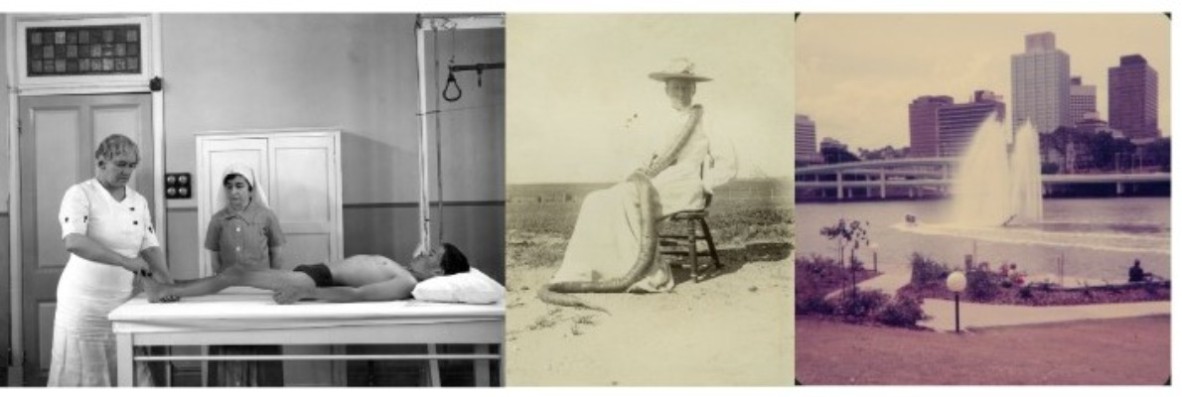
1 - Sister Elizabeth Kenny demonstrating her therapy John Oxley Library, State Library of Queensland.
2 - Woman draped with a large dead tiger snake John Oxley Library, State Library of Queensland.
3 - View of the Queen Elizabeth Silver Jubilee Fountain on the Brisbane River, Brisbane, Queensland, 1977
Clare Sheldon ; Brisbane John Oxley Library, State Library of Queensland
With the end of 2021 approaching, we are taking a look back at our social media platforms to see what were the most popular posts from the year and have a closer look at the collections and stories associated. This blog takes a look at the top 5 most liked John Oxley Library posts from State Library of Queensland's Instagram account.
INSTAGRAM TOP 5
Number 5:
This post was shared on 11th October and highlights the drastic changes in appearance and use on what is now Coronation Drive, Milton. the image depicts River Road, as it was called then, somewhere between Park Road and Lang Park. In 1850 James Warner surveyed present- day Auchenflower. In 1854 the northern banks of the river were subdivided into twelve large estates. From this time rich citizens built a series of grand homes in what is now Milton, Auchenflower, Rainworth and Toowong. One of the most notable estates 'Auchenflower' was named by Sir Thomas McIlwraith and the area which had been part of Milton, became known as Auchenflower.
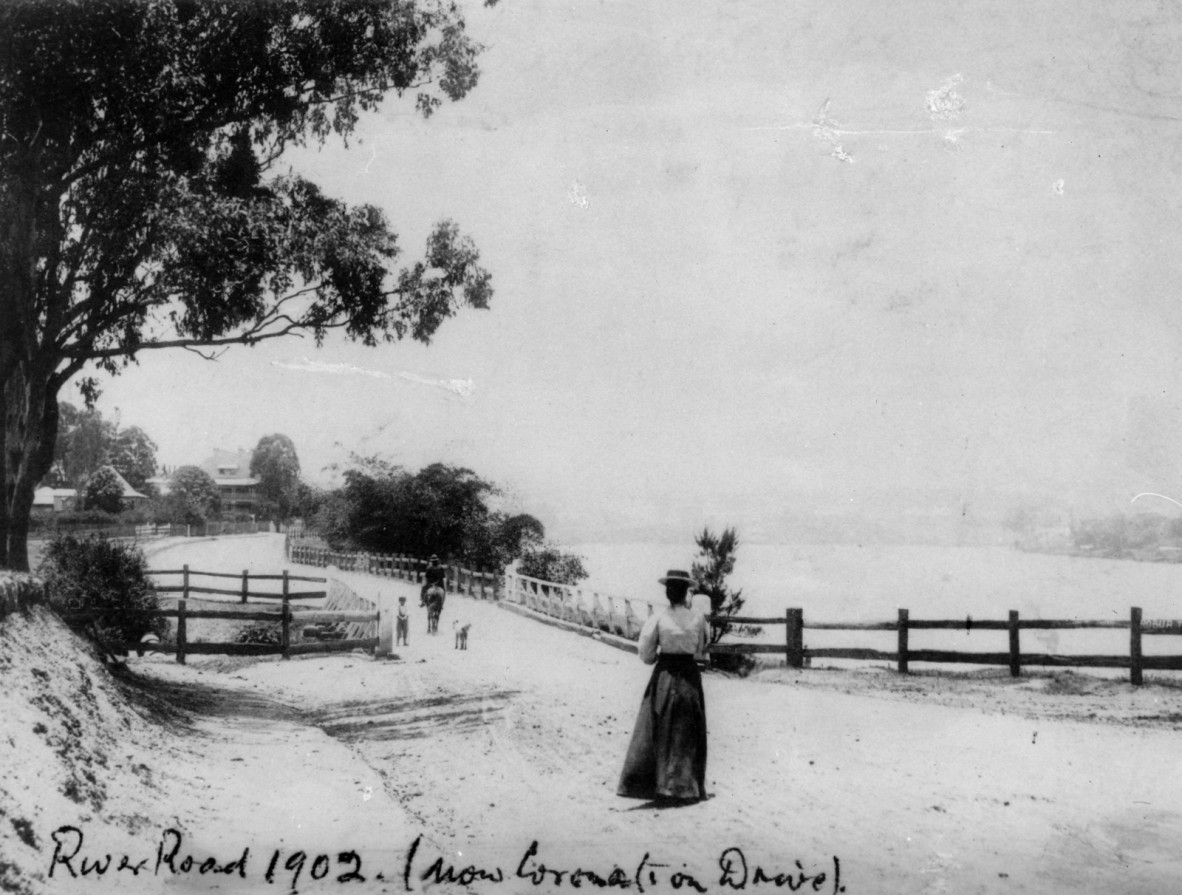
Walk along River Road in 1902, Brisbane John Oxley Library, State Library of Queensland, Negative number: 89680
Number 4:
We shared this charming picture of an Alsatian carrying a Koala on the 17th February, the same day the photo what taken 84 years ago. For those who don't know, the photo was taken at Brisbane's Lone Pine Koala Sanctuary which in the 1930s started a tradition of having a German Shepard with a koala jockey greet guests disembarking the Mirimar ferry. This also spawned a spin off with a snake around the dog’s neck to greet guests (a photo of which we shared later in the year).
The photo is from the Arthur McLeod negative collection which contains 800 acetate negatives taken between the 1910s and 1950s. The negatives show members of the McLeod family, their house at Camp Hill and surrounding views, family friends, pets, recreational outings, events around Brisbane and trips.
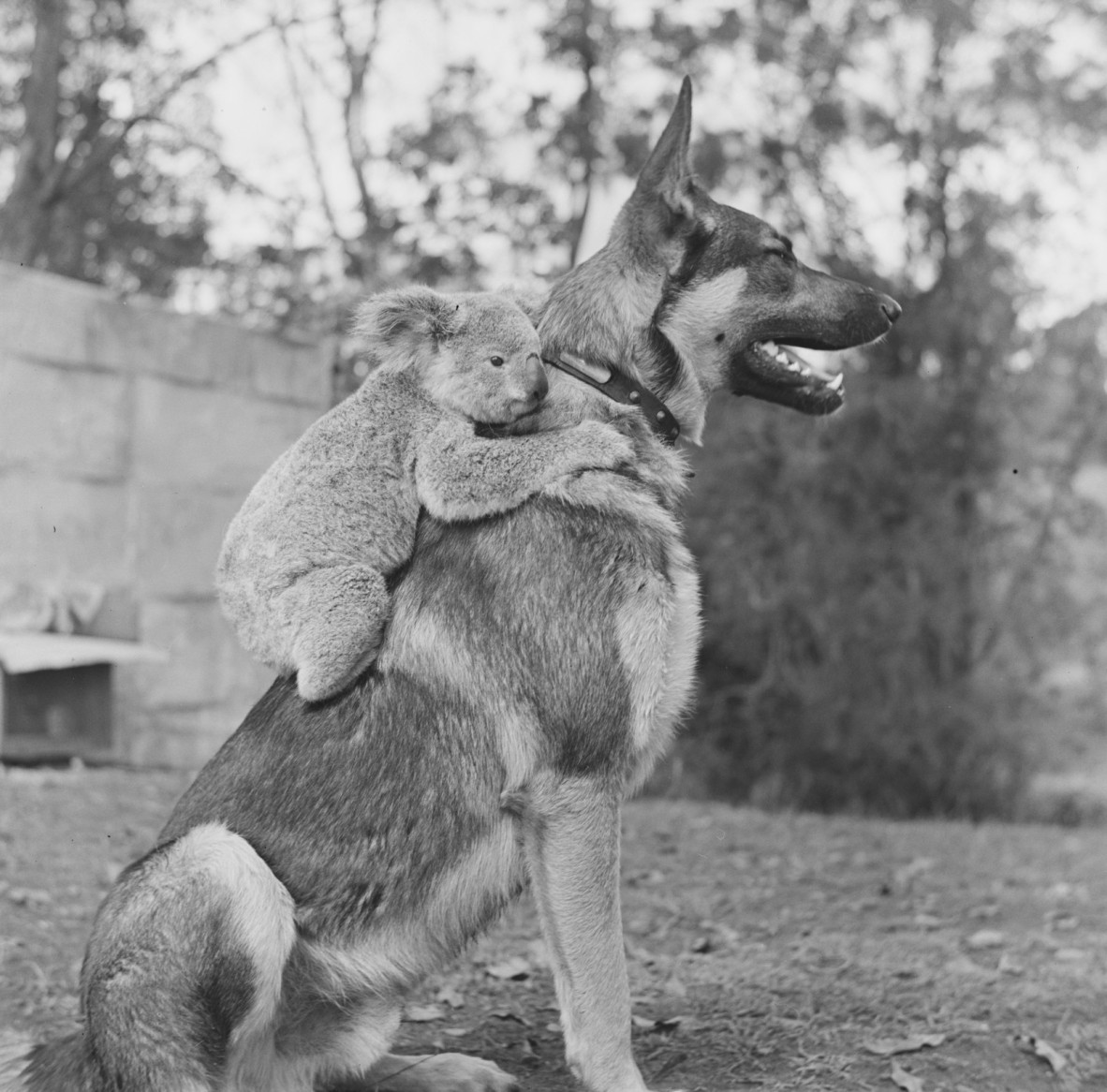
Koala clinging to the shoulders of an Alsatian dog at Lone Pine Sanctuary, 1937, 32086 Arthur McLeod acetate negatives and glass plate negatives, John Oxley Library, State Library of Queensland, Image number: 32086-0003-0039
Number 3:
This post from 8th October is a #FlashbackFriday to when the Brisbane River had its own fountain. The Queen Elizabeth Silver Jubilee fountain was installed beside the Victoria Bridge and in front of the Queensland Cultural Centre's Fountain Room, a popular restaurant and function centre, now State Library's The Edge building.
The fountain was built to honour Queen Elizabeth II's Silver Jubilee visit to Brisbane in March 1977. Her Majesty herself got to flick the switch amid a flotilla sounding their horns, bringing the attraction to life. The fountain quickly became a Brisbane landmark, shooting water high into the air and at night it was lit with 90 lights.
Unfortunately the Brisbane River's brackish, muddy water regularly clogged the fountain's pumps and by the 1980s the fountain started looking lop-sided. One day in 1984 it disappeared overnight, sinking due to a cracked weld in the main floatation chamber. With constant maintenance problems, expensive repair bills and high running cost (the fountain used 600 kilowatts of energy per hour) the project was scrapped by the State Government.
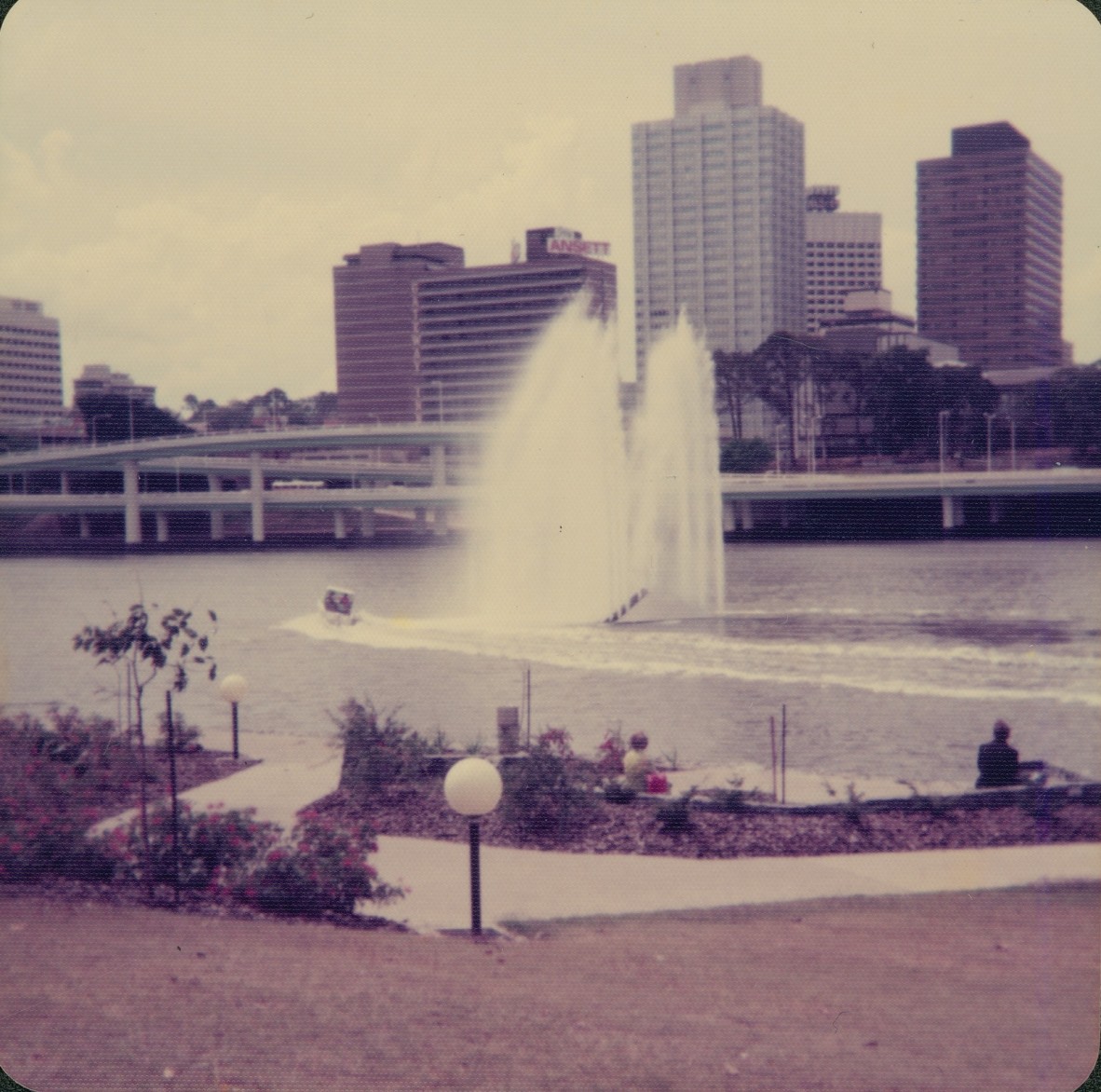
View of the Queen Elizabeth Silver Jubilee Fountain on the Brisbane River, Brisbane, Queensland, 1977. 30963 Clare Sheldon Photographs, image number 30963-0005-0001, John Oxley Library, State Library of Queensland.
Number 2:
Our second most liked post on Instagram these year was this image of a woman draped with a huge 2.3 metre-long deceased Tiger snake in Tambo, Queensland, circa 1902. Unfortunately the image description contains no further information on the woman in question, or any details on how this massive snake met its demise.
One thing is for certain, however: This is an extremely fierce portrait.
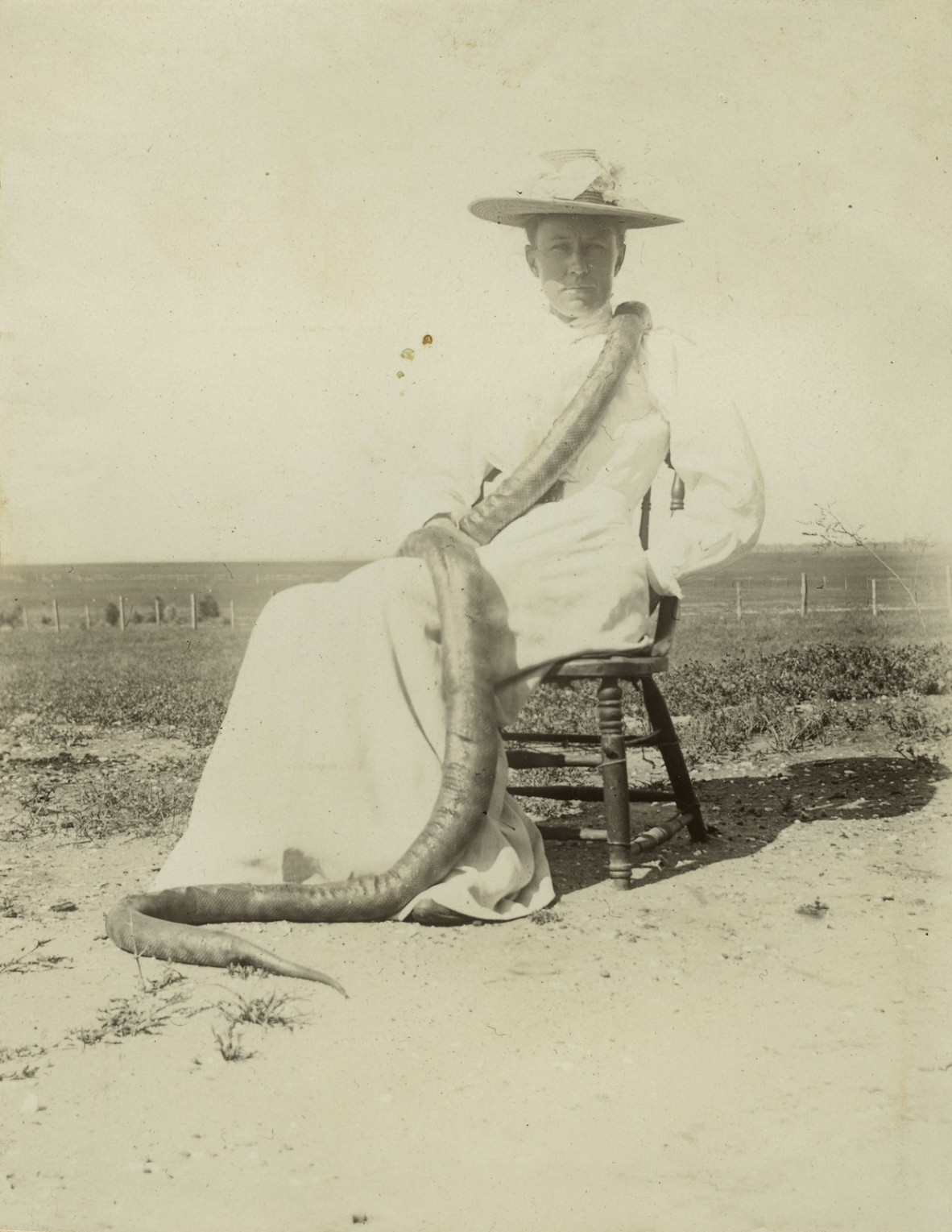
Woman draped with a large dead tiger snake, 6237 Allan Family Photograph Albums, John Oxley Library, State Library of Queensland
Number 1: The most liked John Oxley Library related post from State Library's Instagram in 2021 is...
This image of nursing Sister Elizabeth Kenny was shared on 12th of February for International Day of Women and Girls in Science. Elizabeth was widely recognised for her innovative approach to treating polio.
Elizabeth started as a volunteer nurse with no formal training, providing her care via horseback in the Darling Downs. She furthered her experience by enlisting as a nurse in the First World War. After the war Elizabeth worked for a Toowoomba surgeon, treating cases of polio with hot baths and limb movement, instead of the immobilisation methods used by doctors at the time. Many of her patients experienced a healthy recovery. Clinics offering Elizabeth's treatment popped up in Brisbane and Townsville.
In 1937 a polio epidemic struck Australia, Elizabeth was at the forefront of stopping the disease and she published a book about her treatment. Her successes was internationally renowned and in 1940 Elizabeth was invited to the University of Minnesota in the United States to start a polio treatment training school. In 1946, Minneapolis suffered its worst polio epidemic with the death of over 2,000 people. Elizabeth’s treatment was recognised as the best treatment during those times and it was said to have saved the country from a national disaster.
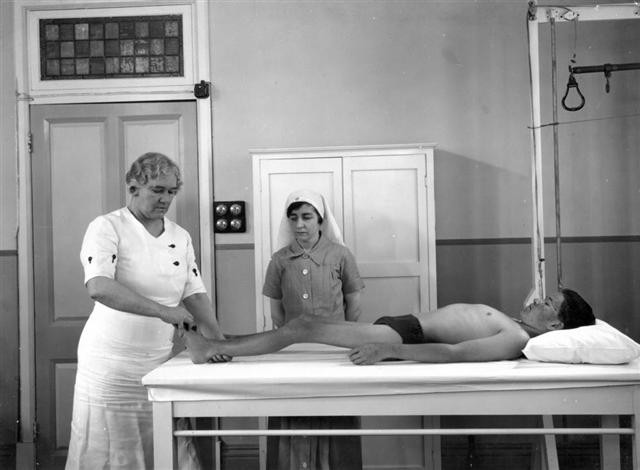
Sister Elizabeth Kenny demonstrating her therapy. John Oxley Library Image 54002.
Comments
Your email address will not be published.
We welcome relevant, respectful comments.